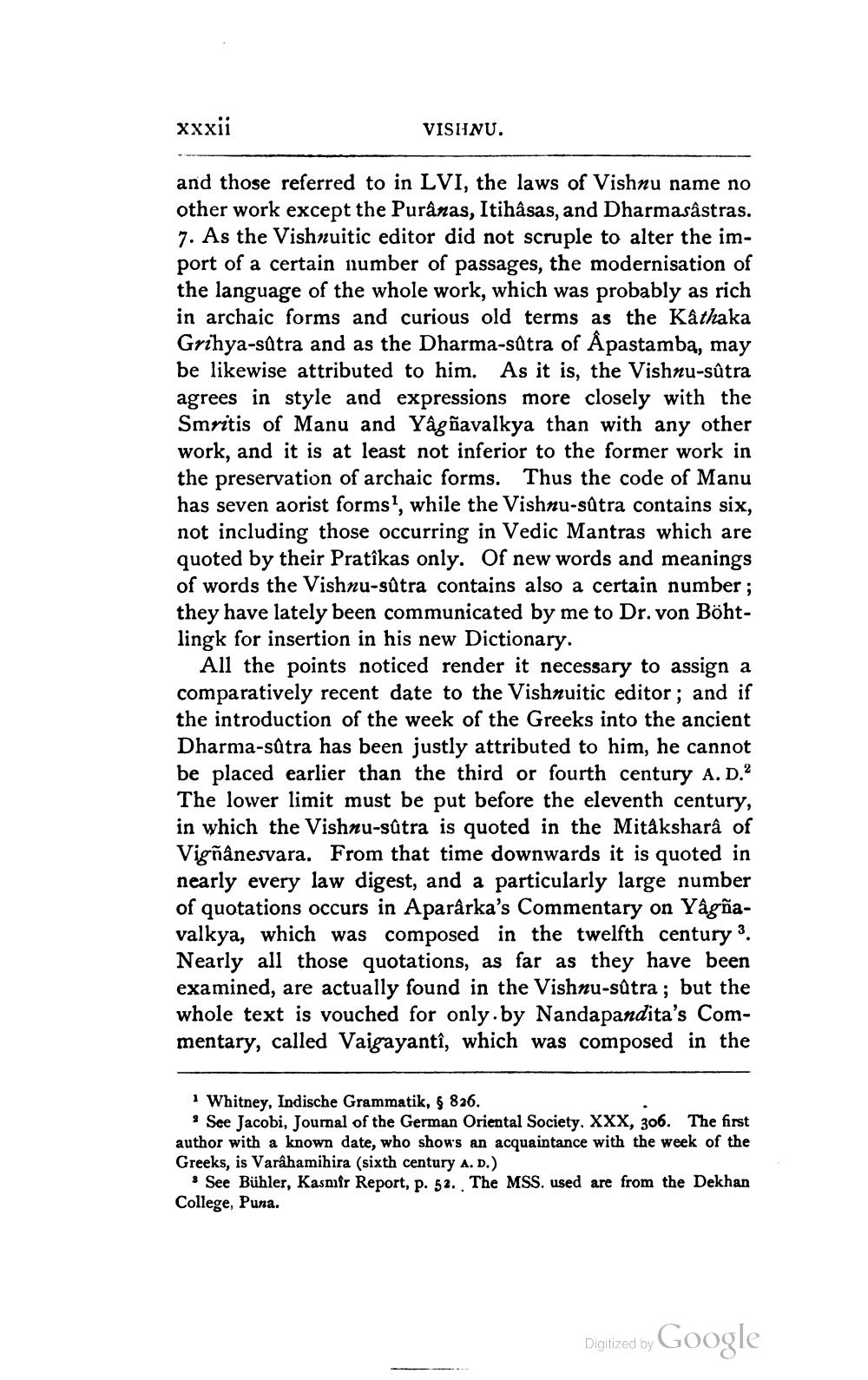________________
xxxii
and those referred to in LVI, the laws of Vishnu name no other work except the Purânas, Itihâsas, and Dharmasâstras. 7. As the Vishnuitic editor did not scruple to alter the import of a certain number of passages, the modernisation of the language of the whole work, which was probably as rich in archaic forms and curious old terms as the Kathaka
Grihya-sûtra and as the Dharma-sûtra of Âpastamba, may be likewise attributed to him. As it is, the Vishnu-sûtra agrees in style and expressions more closely with the Smritis of Manu and Yâgñavalkya than with any other work, and it is at least not inferior to the former work in the preservation of archaic forms. Thus the code of Manu has seven aorist forms1, while the Vishnu-sûtra contains six, not including those occurring in Vedic Mantras which are quoted by their Pratîkas only. Of new words and meanings of words the Vishnu-sûtra contains also a certain number; they have lately been communicated by me to Dr. von Böhtlingk for insertion in his new Dictionary.
All the points noticed render it necessary to assign a comparatively recent date to the Vishnuitic editor; and if the introduction of the week of the Greeks into the ancient Dharma-sûtra has been justly attributed to him, he cannot be placed earlier than the third or fourth century A. D.2 The lower limit must be put before the eleventh century, in which the Vishnu-sûtra is quoted in the Mitaksharâ of Vigñânesvara. From that time downwards it is quoted in nearly every law digest, and a particularly large number of quotations occurs in Aparârka's Commentary on Yâgñavalkya, which was composed in the twelfth century 3. Nearly all those quotations, as far as they have been examined, are actually found in the Vishnu-sûtra; but the whole text is vouched for only. by Nandapandita's Commentary, called Vaigayantî, which was composed in the
VISHNU.
1 Whitney, Indische Grammatik, § 826.
* See Jacobi, Journal of the German Oriental Society. XXX, 306. The first author with a known date, who shows an acquaintance with the week of the Greeks, is Varâhamihira (sixth century A. D.)
* See Bühler, Kasmir Report, p. 52. The MSS. used are from the Dekhan College, Puna.
Digitized by Google




